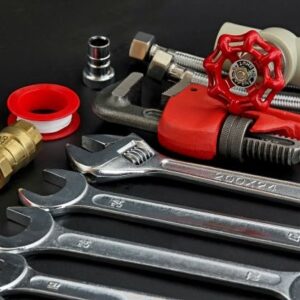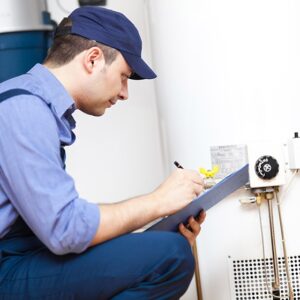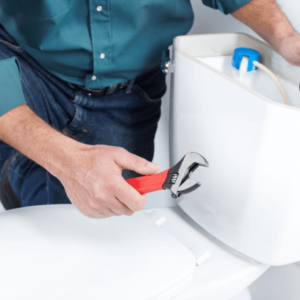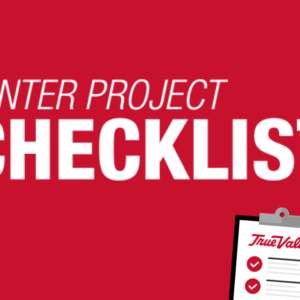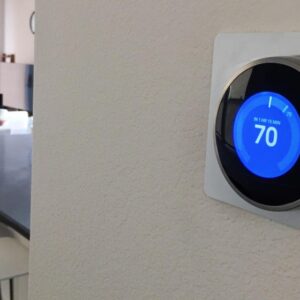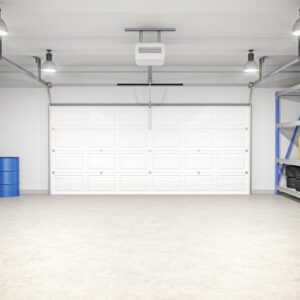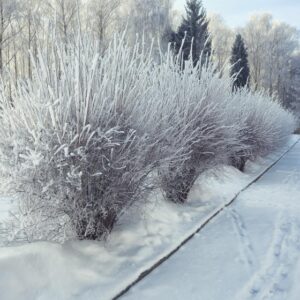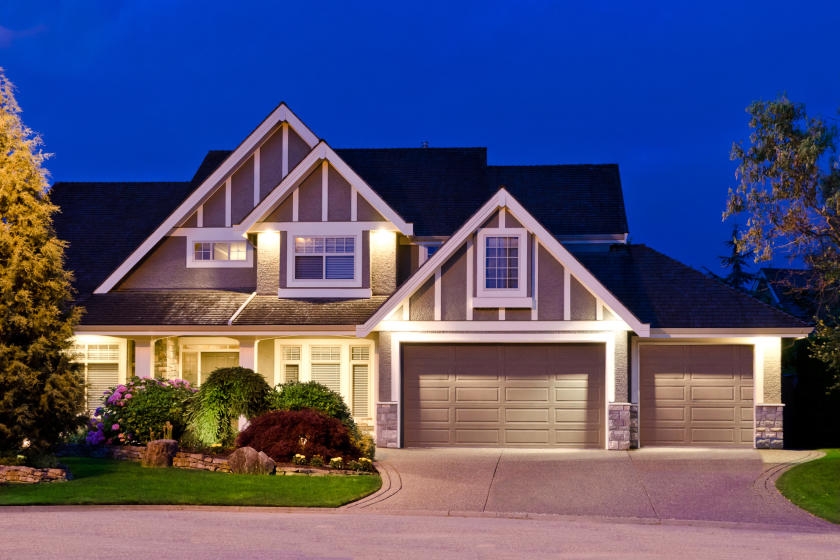Installing exterior flood lights is a great way to add security, safety and nighttime curb appeal to your home. Whether you need extra light in dark corners of your yard, or around walkways or entrances, flood lights are a great choice to illuminate and accent your property.
Step 1: Choose Floodlight Locations
Decide where you need more light at night. Lights installed near home entrances or garage doors are ideal, both for car and foot traffic. If you have a utility shed in a dark corner of your property, install a light there to deter any potential intruders looking for an opportunity. Or light up a walkway with a motion-activated floodlight that snaps on when someone approaches. Many floodlight models have either motion-activated sensors, or they have light-activated sensors that turn the lights on when the sun goes down.
Use a ladder to reach the location where you will install the floodlight (the fixture should be installed high—for example, near the roof—to provide effective coverage) and mark it with a piece of tape or a marker or pen.
HELPFUL TIPS
If you have a large area that requires substantial amounts of light and you want to illuminate it with a single fixture, a high-pressure sodium or metal halide security light is appropriate. A 70-watt sodium security light will illuminate more than 8,500 square feet, provide 6,300 lumens of light, and last up to 12 times longer than a standard incandescent floodlight. Most sodium and metal halide security lights come with a built-in photo control and the light will automatically turn on at dusk and turn off at dawn with no timers or switches.
LED security lights are a good option because they use less electricity and so are more energy efficient, and have a longer lifespan than standard bulbs.
Step 2: Find Nearby Power Source
Locate a nearby power source—for example, an inside outlet or switch from which you can run wiring to the outside for the new light. Be sure the circuit you will tap into can handle the additional load from the new light. Turn off the circuit at the breaker box to help see what fixtures and switches are already on the circuit. The circuit load you use shouldn’t exceed 80 percent of the total load capacity, meaning that with a 20-amp circuit, you should only be operating at 16 amps maximum. Total wattage in this case would be 2,400, with a safe wattage use of 1,920 watts. Add up the total wattage being used on the circuit to see if it can handle the extra output of the floodlight.
If the wattage will exceed the maximum with the new light, you will have to either use a different power source or install a new circuit for the floodlight.
Step 3: Prep the Fixture
Use an electric drill and hole saw to cut a hole on the exterior of your house in the location you chose for your floodlight. Remember, the higher the floodlight is placed, the more effective it will be. Make the hole large enough to feed electrical cable through it to the junction box from which you will be feeding power to the fixture. Fish the electrical cable through the exterior hole to the junction box so that you can make the connection, using a fish tape.
HELPFUL TIPS
If you’re unsure of your electrical skills or your ability to fish the electrical cable through your walls, call in a professional for help.
Make sure you’re completing the job in compliance with local codes and ordinances.
Connect the wiring to the fixture as directed by the manufacturer’s instructions. Secure the fixture to the wall using the manufacturer-supplied hardware and an electric screwdriver.
Step 4: Connect Power to the Fixture
Turn off power to the circuit at the home’s main electrical box. Verify that power is off using a high-voltage neon circuit tester in an outlet that is on the same circuit. If you’re unsure, you can also shut off power to the entire house by turning off the main circuit breaker.
SAFETY ALERTS!
Never trust an inoperable light switch as a sign that the circuit has been deactivated.
Make sure the circuit is truly “dead” before touching any wires or terminals. Check for current again with a voltage tester before continuing to work.
Remove a “knockout” on the junction box that will feed power to the fixture. You can do this by prying out the pre-cut “knockout” tab with a flat-head screwdriver and needle-nose pliers. Slide the cable from the fixture you fished through the wall through the new “knockout” hole and secure the cable to the box with a cable connector and locknut. Connect the fixture’s ground wire to the ground wire in the box by twisting the two ends together using needle-nose pliers.
If you need more bare wire to work with, remove some of the sheathing with wire strippers. Connect the white wire end with the white wire in the box, and then connect the black wire with the black wire in the box. Secure each group of wires with a wire connector and wrap each connection with electrical tape. Push the wires back into the box and replace the cover plate.
Step 5: Test the Light/Motion Detector
Reactivate power to the circuit and step outside to make sure the light is on. If your floodlight has a motion-activated sensor, test that it is working as well. Remember to direct the floodlights toward the ground for optimum illumination.
HELPFUL TIP
When installation is complete, seal the area where the light’s mount meets the wall with silicone caulk and a caulking gun to keep moisture out.
Good job! You’ve installed outdoor floodlights and brought beautiful and reassuring light to your property.
Project Shopping List
Here’s what you’ll need to complete this project successfully.

